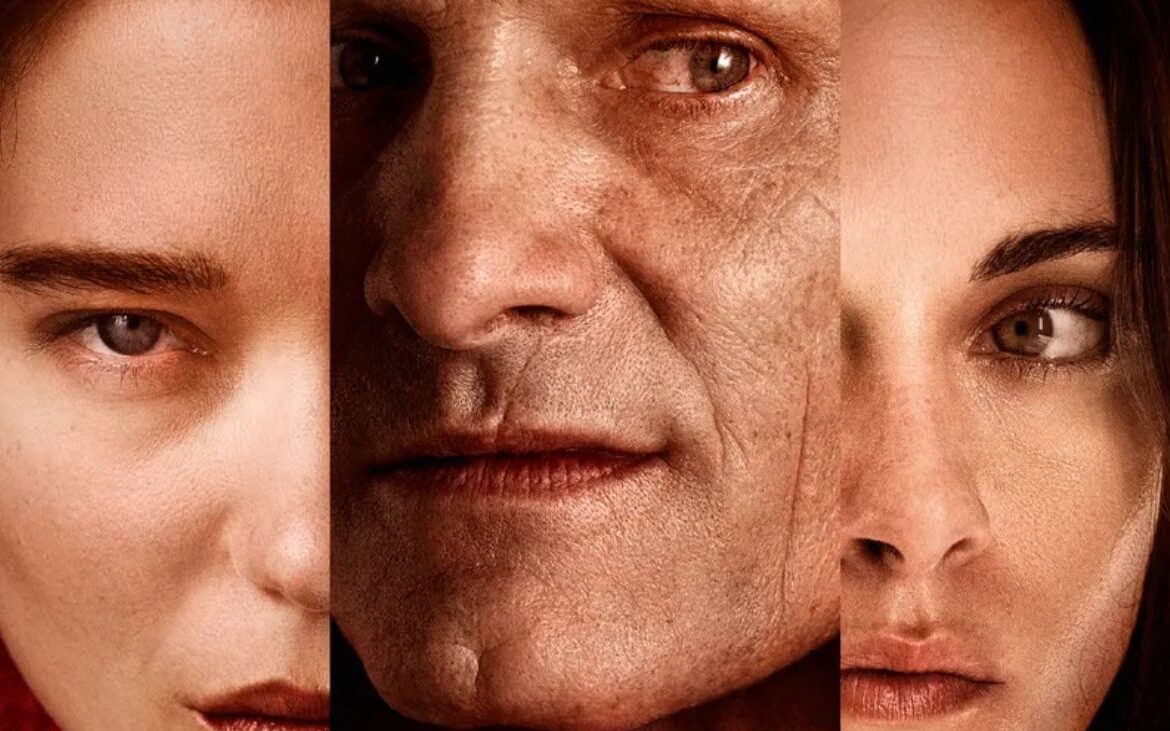For a movie that begins with the murder of a child, Crimes of the Future is remarkably narratively restrained. The first third, or even half, feels as though it’s simply an exercise in worldbuilding without much narrative drive, and while there are certainly provocative concepts introduced, none of them could necessarily be described as thrilling so much as intriguing.
We’re introduced to a future where infection and pain are things of the past so surgery is a pastime for anyone with a knife and performance art, which largely centers on body modification, is all the rage. Some humans have begun to develop new organs over the course of their lives, overwhelmingly without any apparent function, and the authorities are concerned with the definition of “human” as bodies continue to change. Which is why the child murdered in the opening, by his mother no less, becomes a focal point. This boy was born with different organs, different organs that served a novel function.
The film spends most of the first section with artists Saul Tenser (Viggo Mortensen) and Caprice (Léa Seydoux), who respectively grow new organs and surgically remove them as performance art. The movie builds its world out from this as we see Saul and Caprice go to the newly formed National Organ Registry, where they meet bureaucrats Wippet (Don McKellar) and Timlin (Kristen Stewart), perform an organ removal, and attend other artists’ shows. Throughout this portion of the movie there are conversations about the meaning of human evolution in the face of pollution and climate change: whether humans can will these new organs into existence, what counts as art, which art has meaning and what’s purely escapist nonsense, the much advertised “surgery is the new sex,” and more.
A plot doesn’t begin to cohere until we’re properly introduced to the murdered boy’s father Lang Dotrice (Scott Speedman), who requests that Saul and Caprice perform a public autopsy on his son so that the world can bear witness to the next step in human evolution: a human that feeds on the synthetic byproducts of human existence. Perhaps ironically though, it’s when these more significant plot elements are introduced that Crimes of the Future loses some of its momentum as the previous series of conversations are never-endingly fascinating and the story that comes to the fore feels a bit boring in comparison.
But even when the film commits to a narrative, it’s still regularly introducing new ideas, eroticism continues to undergird if not drive just about every other scene, and there’s never a shortage of striking images of body modification and excavation. These images are set against backdrops of crumbling and decaying walls that offer a strange beauty but also grow monotonous as the film goes on, which serves to drive our attention to the foreground.
Along with images of bodily transformations, the foreground also offers a wonderful array of performances that often feel as though they belong in films with wildly different tones and yet somehow manage to fit together in this world that’s breaking down. The most exciting of these performances comes from Stewart, who, after having fully disappeared into her role in Spencer, pushes every single one of her tics to the maximum. She speaks quickly and in clipped sentences, twitches the corner of her mouth often and blinks more, making her steal every scene she’s in, which sadly (but also perhaps wisely) isn’t many.
Crimes of the Future is a strange film that feels like Cronenberg returning to the ideas that drove the early part of his career with an incredible amount of passion and fascination that seems to have been fermenting since the turn of the century. And while the lack of narrative momentum takes a moment to adjust to as there’s nothing here that really fits the label of “body horror,” because there are no threat to our characters, it ultimately works to the film’s advantage that it functions largely as a series of dialectical exercises on the themes that body horror as a genre was built upon.
It’s a body horror movie that isn’t scary, but is so deeply invested in the questions about the body that the genre has raised over the course of its history that it may well be the best body horror movie of Cronenberg’s career.
READ NEXT: Why Resident Evil 7’s First-Person View Is So Important to Its Body Horror
Some of the coverage you find on Cultured Vultures contains affiliate links, which provide us with small commissions based on purchases made from visiting our site.


